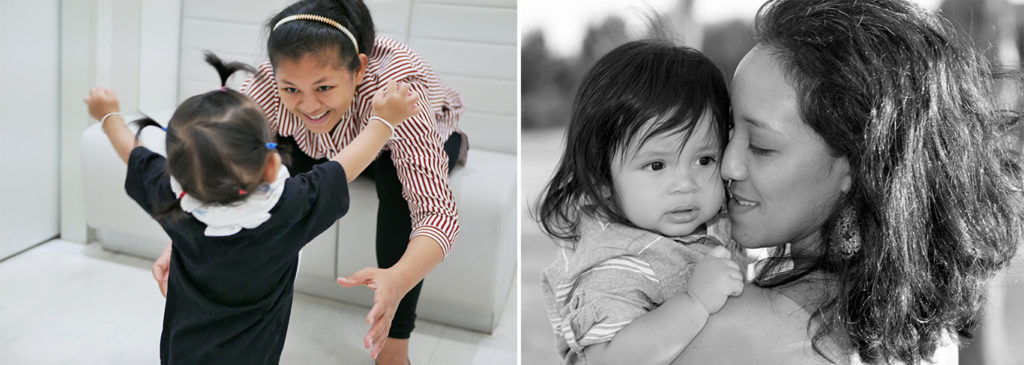The Social Reflex: Approach and Avoidance

Social interactions are essential to our well-being, and to our long-term survival and learning. So it’s not surprising that our bodies have social reflexes, which play a vital role in our overall health, learning, thriving, and resilience. All healthy foundational relationships depend upon our fundamental social-emotional reflex: the approach/avoid reflex.
This interpersonal reflex becomes conditioned by our interactions, which communicate to our body that a person is either safe and beneficial, or undesirable (even possibly dangerous). We approach or avoid someone as a result of repeated positive or negative interactions.
Think about the person you love most in the world. If they walked into the room right now, what would you do? Probably smile reflexively, express your excitement to see them through your voice and facial expressions, maybe hug them, and invite conversation and closeness.
Now think about someone you truly can’t stand. If you saw them at the grocery store, would you pretend you hadn’t seen them? Avoid eye contact, try to make yourself as small as possible, and slink into the next aisle?
Approach/avoid reflexes between two people are observable because they trigger behaviors:
Approach reflexes to people (and sometimes animals) cause us to seek cozy proximity with them and use warm vocal tones. Our faces become expressive, and we pay attention with our whole body. When two people have approach reflexes to each other, these behaviors become reciprocal (there’s a give and take in their interactions).
Avoidance reflexes cause us to hesitate, back away, avoid physical contact and close proximity. We become less expressive and possibly withdrawn. We may even have an aversion to their smell!
In general, neither of these responses is better than the other—they’re both important for our physical and emotional support and safety. Healthy approach reflexes are what allow us to condition deep, body-level emotional connections with people we love. Healthy avoidance reflexes keep us safe from harm.
But avoidance can become maladaptive—that is, unhealthy—in certain circumstances, going all the way back to birth.
It’s very important for newborns and their mothers to have approach reflexes to each other—for survival, nutrition, learning, developing emotional range and communication, postpartum mental health, and forming meaningful relationships. What sets the stage for the approach reflex is another reflex—the orienting reflex—which causes us to pay attention to changes in our environment. Depending on the nature of that change, we act to approach or avoid it.
Once a baby is oriented to mom (or any foundational relationship), sensory stimulation (like being held, rocked, sung to, talked to, and fed) tells the baby’s body that this is an environment they want to be in, conditioning their social reflex toward approach. And the sensory, social, and hormonal feedback the mother gets from these interactions positively conditions her reflexes to approach her baby.
But you can’t have an approach response if you don’t orient first (it’s hard to connect if someone refuses to look at you!).
Preterm, and sometimes full-term, infants and their moms are separated, sometimes for hours, days, or months, and encounter a lot of physical and emotional pain, which can (understandably) cause them both to withdraw. A baby who has multiple painful procedures done every day might develop an avoidance reflex to physical touch, even though, broadly, touch is very important for development and wellbeing.
Without intervention to help the baby associate calming touch with love, care, and safety, the baby might have ongoing trouble orienting to mom, which might keep that social-emotional reflex conditioned toward avoidance. It’s extremely distressing when your baby has an avoidant response to you, so mom might have difficulty, in turn, conditioning her social reflexes as well.
Getting the baby oriented to mom through sensory and emotional stimulation allows mom to share positive sensory input with her baby (like calming touch, eye contact, and warm vocal tone). Mom and baby begin to associate each other with comfort. Very importantly, mom starts getting that positive feedback to her body, and both of their reflexes start shifting from avoidance to approach.
Soon, those repeated approach behaviors condition a deep, body-to-body emotional connection where mother and baby seek each other out. They become each other’s home: being together calms both of their nervous systems and releases nurturing hormones essential for development and physical, mental, and behavioral health. Even children who’ve had this intervention as preterm babies (an extremely vulnerable population) are more prosocial and verbal, have better language skills and cognition, have fewer behavior and attention problems, and have better stress resilience. Their mothers have better postpartum mental health and better stress resilience, too. This relational conditioning supports them both lifelong and allows them to thrive as individuals and as a pair.
Healthy social reflexes lead to whole-body calm. This is the reason people in connected relationships seek each other out, and it’s the reason they are able to get through life’s difficult moments together. And it all starts with this prosocial conditioning that happens through nurturing, loving interactions within our foundational relationships.
